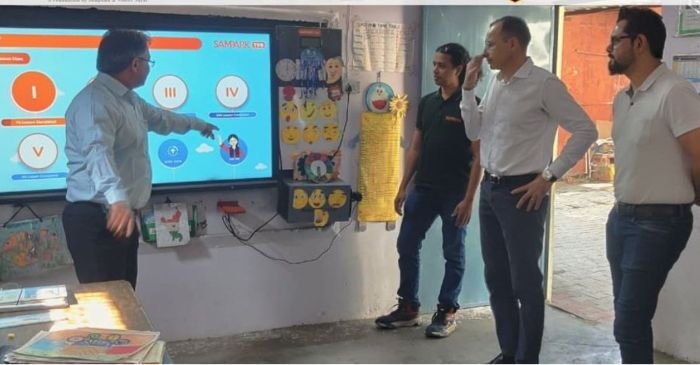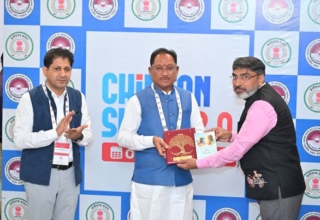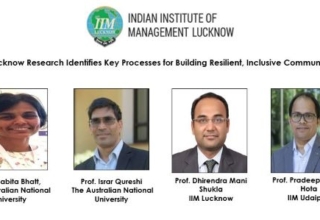
Autar Nehru
Filmmaker Vidhu Vinod Chopra, who made superhit films like 3 Idiots and 12th Fail, by now must have developed more understanding about the pitfalls of country’s education system than most of PhD scholars from their own immersion. He could pull off blockbusters on its success stories and a hope despite it being so regimental, inadequate, far away from real world and importantly in need of an impetus.
Modi Government in the last 10 years after a sluggish and crude engagement with the higher education ecosystem, did manage to find critical areas of improvement and got on to job for addressing and revitalizing those areas and find a futuristic direction. National Education Policy formulation, of course, did provide the vital and necessary motivation for a microscopic analysis of the system and after studying models both within and outside India, steps were initiated. NEP certainly gave that roadmap and helped develop a vision. Those discussions and insights did richly contribute to the Prime Minister Narendra Modi’s vision of Viksit Bharat (developed India) 2047 and seeing these 25 years of Amrit Kaal period as an opportunity in lifetime of this nation.
A vast country like India and also the most populous on the planet is a land of diversity. This diversity ironically also applies to stages of social and economic development. Somebody once remarked India lives in centuries. It may not be true now, but certainly it lives in decades. So, the formal education too has seen a proportionate progress though these crests and troughs despite uniform standard norms and delivery mechanisms. Higher education in particular being culturally wedded to employment and good life in colloquial sense seen as a gateway, therefore becomes more crucial to support dreams of youth and ultimately the country.
With the universal access to school education a national mission, naturally more and more youth are becoming eligible for an upward higher education pathway and the Government itself is targeting 50% GER in higher education by 2035 (as per NEP 2020). This rising demand for capacity has made the Government seek solutions and in the past couple of years through the University Grants Commission (UGC), it has undertaken a series of reforms to address the reframing the system to administratively make it easy for the system: for instance, the National Higher Education Qualifications (NHEQF) for academic pathways, Academic Bank of Credits (ABC), multiple entry and exit system (MEES), admissions through CUET and other measures to straighten the system, help student mobility and make it administratively easy for HEIs to administer the heavy rush.
Policy makers have also taken a bold step of giving respectability to online and distance education and, in fact, provided it equivalence. In any case, hybrid education of classroom and online delivery, which in some form is now integral to contemporary education everywhere globally for its ease and value addition, is a reality in India.
The series of reforms for making more teachers available to the system is also part of this push. The entry into PhD programs has been made easy as part of NEP 2020 recommendations which seeks to encourage students to pursue research careers with the integrated PhD pathway and making it much faster by eliminating redundancy and too many degrees. Another major reform in this series carried out in 2023 was making PhD optional for recruitment of Assistant Professors
From last year (2023) July, M Phil, which was a bridge course between master’s program and PhD was discontinued and now this year, the need of master’s program has been reduced.
The PhD admissions from this year will see much younger aspirants as the University Grants Commission (UGC) has cleared the decks for direct entry of 4-year Bachelor’s degree (Honours/ Honours with Research) graduates into PhD degree course. This (year) March, UGC, the higher education regulator of the country, put the stamp of approval on the UGC (Minimum Standards and Procedure for Award of PhD Degree) Regulations, 2022, which introduces entry of Undergraduate students completing a four-year program under the NEP(UGCF) curriculum (of 160 credits) into PhD program without undertaking master’s program.
Permitting undergraduate students into PhD programs through the National Eligibility Test (NET) will strengthen the research ecosystem in India and “open up” many opportunities for students at a “very young age” in research, UGC Chairman Jagadesh Kumar told news agency ANI.
With about 24% faculty positions vacant and a target of 50 GER by 2035 as said above, the Government in its own scheme of things, may have tinkered the PhD ecosystem to make more teachers and researchers available, but there are those who will question if it will trigger a rush for PhDs while the university system is overwhelmingly comprised of teaching universities and most public universities overburdened with limited autonomy, labs and lack research culture.
This is the bottom-line that Modi 3.0 will have to begin with. There is a need for university system to be supported big-ticket and catapult into a vibrant academic and research setting in real sense. The hairline fractures present in the evolving system need to be taken care before it starts ailing. CUET’s administrative success no doubt is a milestone in the league of digital India successes but in education you’re also dealing with young people.
Academic achievements and rewards in the form of good grades has been the primary reason for hard work by all stakeholders: students, teachers and schools. However, with CUET needing just qualifying marks, students are thinking it is better to go to coaching centre to learn how to crack the test than spend long hours in labs for practical, sit in the library for extra references or cajole a teacher/mentor into answering curiosities and questions. So, weightage for academic achievement is needed to keep schooling system robust and students focused on quality education. This is just one quality issue, surely there are several.
Working on preserving academic sanctity and processes while promoting innovations and more creativity, is an area, where the policy makers and administrators need to work diligently. This is the bedrock of assuring quality education, which in turn holds a guarantee for having a profound impact on overall societal development and progress.
Along with aforesaid discussion above, creating and adding more physical and technological infrastructure, teachers, skilling facilities, etc go without saying on the higher education planning agenda. All this translates into a requirement for more Government money for education and looking at affordable public education as a national development goal.
Welcome Modi 3.0!








